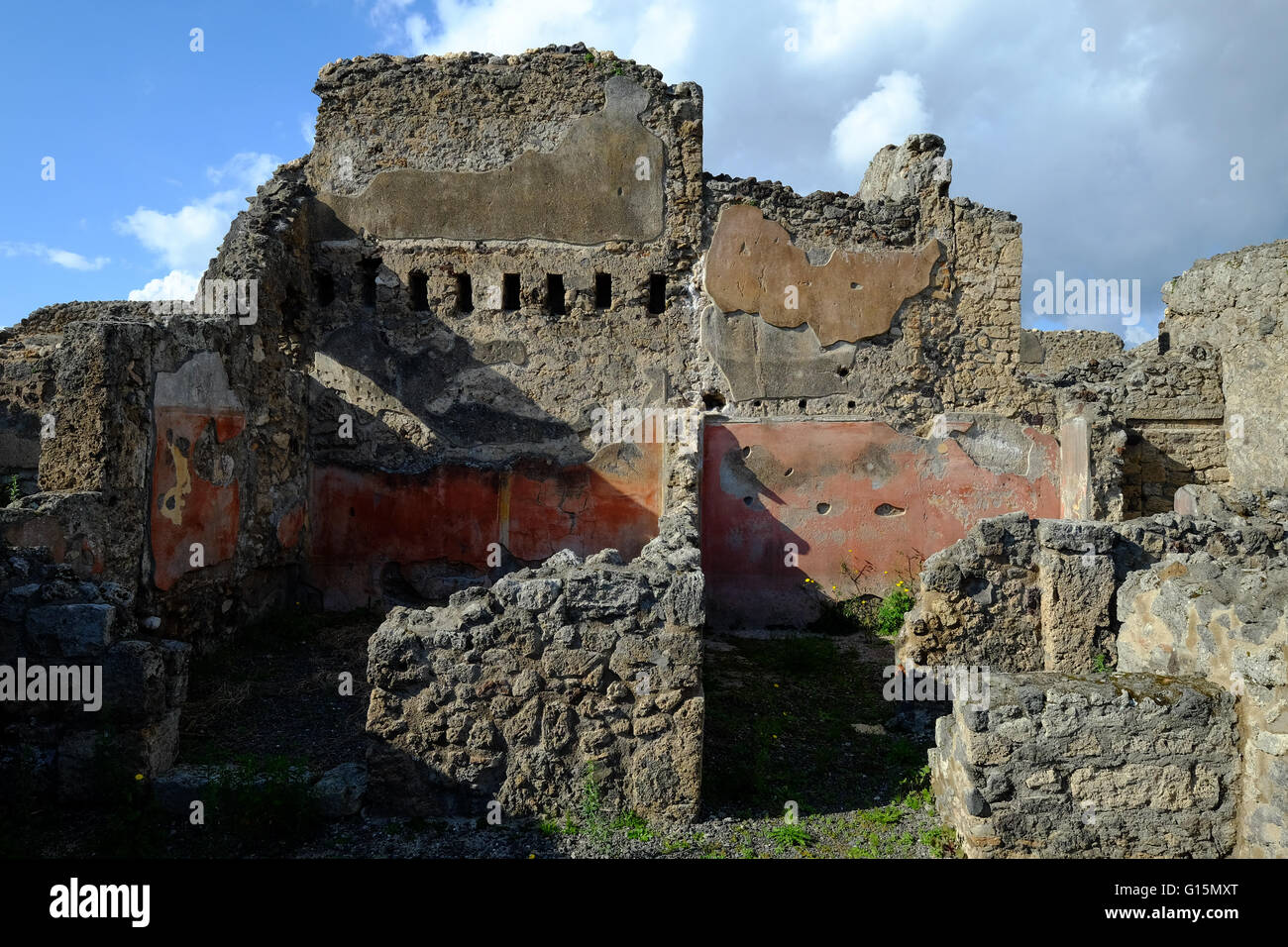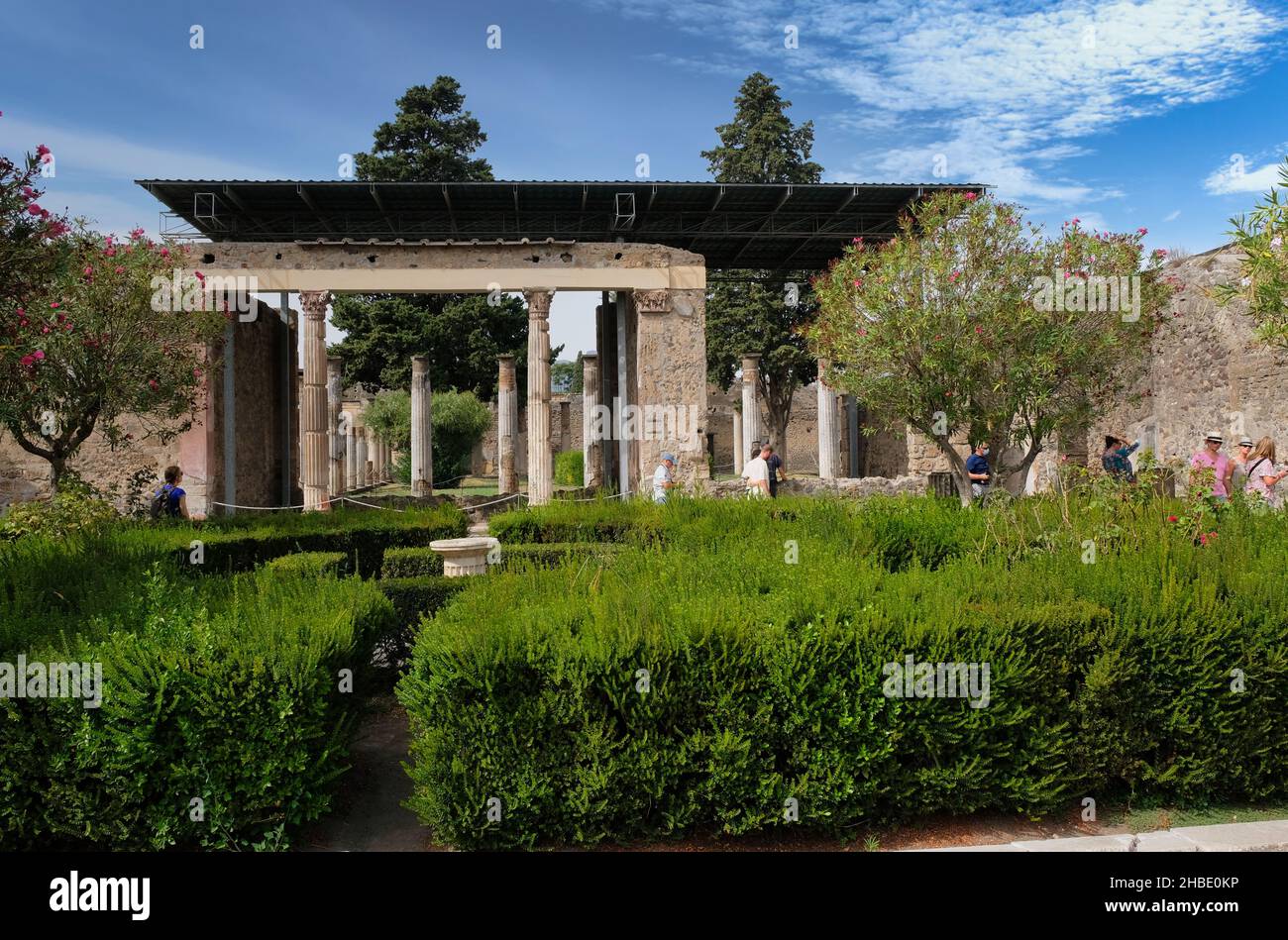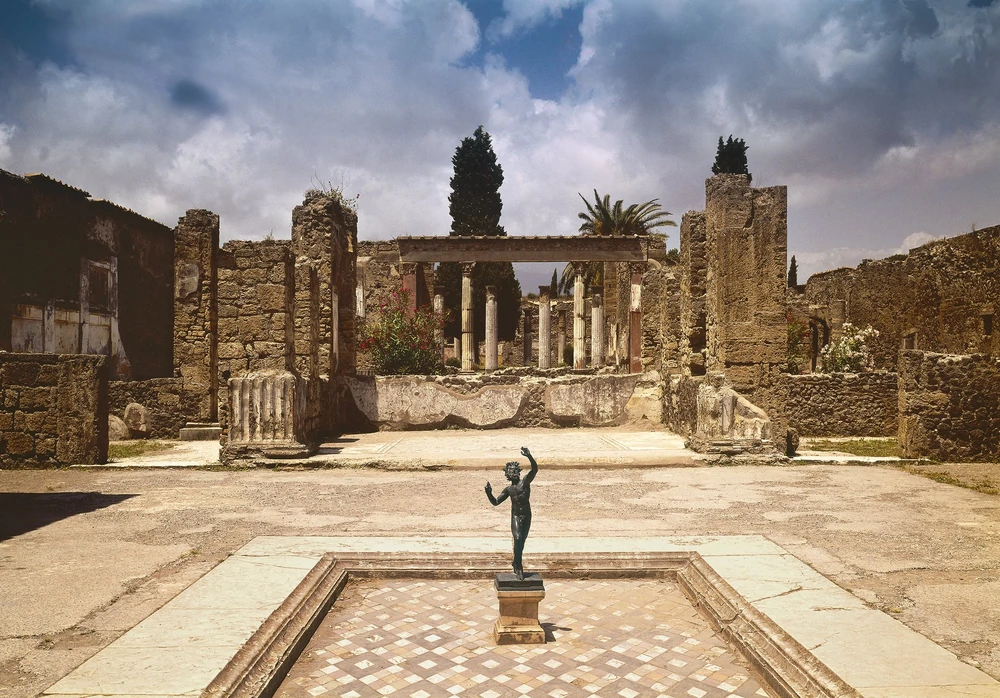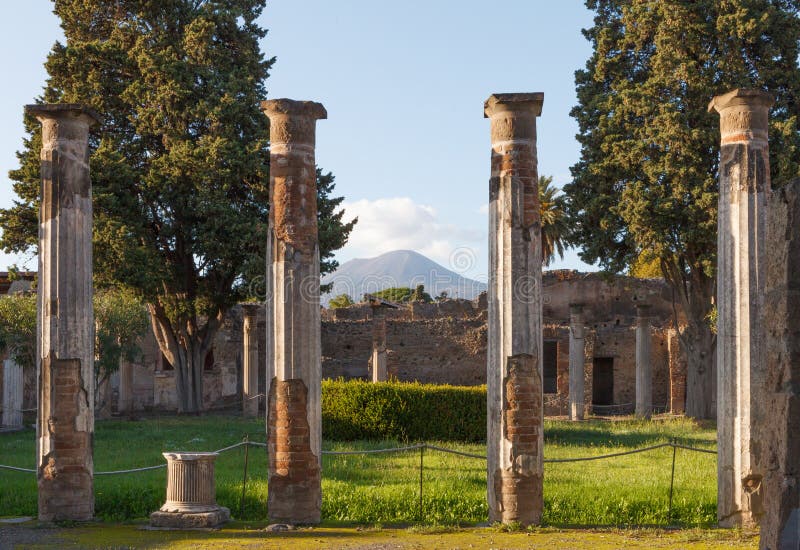:max_bytes(150000):strip_icc()/house-faun-56a025bd5f9b58eba4af24d6.jpg)
Pompeii's House of the Faun The Richest Residence
The House of the Faun - Planet Pompeii. Open 9.00-19.00. Gallery 11. FAVOURITE. Covering a total surface area of about three thousand square metres, this building occupies a whole Insula (block) and is certainly one of the largest and most sumptuous houses in Pompeii. Its entrance lies in Via della Fortuna. The residence is of Samnite origin.

The House of the Faun in Pompeii "Lararium" (polychrome succo) Pompeya, Historia de roma
The House of the Faun (Casa del Fauno), constructed in the 2nd century BCE during the Samnite period (circa 80 BCE), was a grand Hellenistic residential palace complex that was framed by peristyle in the Roman Pompeii, Italy. The House of the Faun was the largest and most expensive residence found in Pompeii.

House of the Faun, Pompeii, UNESCO World Heritage Site, the ancient Roman town near Naples
The House of the Faun in Pompeii is one of the most famous and well-preserved residences in the ancient Roman city of Pompeii, buried under the ashes and lava of the eruption of Vesuvius in AD 79. This residence is named after a statue of a faun in the garden. The house is famous for its impressive size and its rich frescoes and mosaics, which.

The House of the Faun, was one of the largest and most impressive private residences in Pompeii
House of the Faun. It is one of the larger houses of Pompeii, covering an entire block of about 3000 sqm and, according to its original layout, it dates back to the 2nd century BC. The wealth and social level of the owner are immediately evident from the street: the pavement bears the Latin welcome inscription (HAVE); the majestic door is.
:max_bytes(150000):strip_icc()/Sommer_peristyle_Faun-56a020863df78cafdaa03d36.jpg)
Pompeii's House of the Faun The Richest Residence
House of Sallust. The House of the Faun, located in the ancient city of Pompeii, was the residence of a wealthy Roman magistrate and was buried by the eruption of Vesuvius in 79 AD. The building was unearthed in the 19th century and has helped scholars to reconstruct the life of the past thanks to the precious finds unearthed.

Lifestyles of the Roman Rich and Famous Houses and Villas at Pompeii
House of the Faun, an ancient, private residence situated in Pompeii, Italy, was one of the most important and richly decorated houses that reflect the dignified life of the people during the Roman republic period. Referred to as one of the largest Roman houses in Pompeii, the House of the Faun featured great artworks, most of which are now on.

Domus Romana The House of the Faun is a Roman house in ancient Pompeii, buried during the
The House of the Faun ( Italian: Casa del Fauno ), constructed in the 2nd century BC during the Samnite period (180 BC), [1] was a grand Hellenistic palace that was framed by peristyle in Pompeii, Italy. The historical significance in this impressive estate is found in the many great pieces of art that were well preserved from the ash of the.

The Faun's House of Pompeii · See Pompeii
House of the Faun, Pompeii. In leave, the garden, too. Although, the faun truth is to stepping tell, the faun away, is not beginning a faun, but to a take his satyr, and he left years ago for Naples, where he remains behind alarmed glass. Now, in situ, there's a rain-mottled replica locked in the same boogaloo pose.

House of the Faun one of the largest, and most impressive private residences in Pompeii, Italy
The residence is of Samnite origin and was built in the early 2nd century B.C. in place of an older construction. It derives its name from the small bronze statue of a dancing faun (a copy of which is exhibited here) which decorates the impluvium of the Tuscan atrium. Nothing is known about its owners. From an architectural viewpoint this house.

Italy Pompeii House of the Faun The atrium JeanClaude Golvin in 2021 Ancient rome
Detail of tesserae, Alexander Mosaic, created in the 2nd century B.C.E., from the House of the Faun in Pompeii, reconstructed in the National Archaeological Museum, Naples. The Alexander Mosaic (8 ft 11 in × 16 ft 10 in) is made up of approximately 1.5 million tesserae, which are small, cubed pieces of glass or stones cut into shape.

Lifestyles of the Roman Rich and Famous Houses and Villas at Pompeii
View of the large atrium of the House of the Faun in Pompeii with a central impluvium (rainwater basin) and the bronze statue of the Dancing Faun. On either side of the atrium are cubicula (bedrooms) while at the rear is the tablinum (study room) with the famous Alexander Mosaic.The House of the Faun is one of the most famous and visited houses in Pompeii.
.jpg/1280px-House_of_the_Faun_(Pompeii).jpg)
FileHouse of the Faun (Pompeii).jpg Wikipedia
The House of the Faun, one of the most lavish Pompeian residences which spanned an entire block of almost three thousand square metres, endured the tragic bombing of the Second World War, like many buildings at Pompeii. In September 1943, two bombs fell on the dwelling, one of them landing on the tetrastyle (four-column) atrium which formed the.

House of the Faun of Pompeii (Pompei Stock Image Image of ancient, history 187173635
Other articles where House of the Faun is discussed: Pompeii: Description of the remains: The House of the Faun occupies an entire city block and has two atria (chief rooms), four triclinia (dining rooms), and two large peristyle gardens. Its facade is built of fine-grained gray tufa from Nuceria, the chief building material of this period. The walls are decorated…

House of the faun, Pompeii 79AD Ancient rome, Ancient romans
House of the Faun. A Walk through the House. The Atrium Facade. The Tablinum

House of the Faun, Pompeii (9) Richard Mortel Flickr
Detail of tesserae, Alexander Mosaic, created in the 2nd century B.C.E., from the House of the Faun in Pompeii, reconstructed in the National Archaeological Museum, Naples. The Alexander Mosaic (8 ft 11 in × 16 ft 10 in) is made up of approximately 1.5 million tesserae, which are small, cubed pieces of glass or stones cut into shape.

House of the Faun one of the largest, and most impressive private residences in Pompeii, Italy
The name of the house comes from a beautiful bronze statue of a faun, a roman divinity related to woods and nature.It is portrayed while dancing and was placed there as a decoration for the impluvium, a shallow pool located in the atrium to collect rainwater.. The house dates back to the beginning of the 2nd Century BC; with its 2970 square meters, it is the largest house in Pompeii.
- Valutazioni Giocatori Associazione Sportiva Roma Juventus
- Fiore Di Cactus Cast Completo
- Johnny Depp King Of Cult
- Tutti I Colori Della Matematica Volume 1 Pdf
- Quarto Grado Quando Va In Onda
- Correva L Anno Di Grazia 1870
- 2 Euro 2017 Rheinland Pfalz
- Tipi Di Scrittura In Corsivo
- Film La Tana Dei Lupi
- Gol Di Oggi Del Napoli
